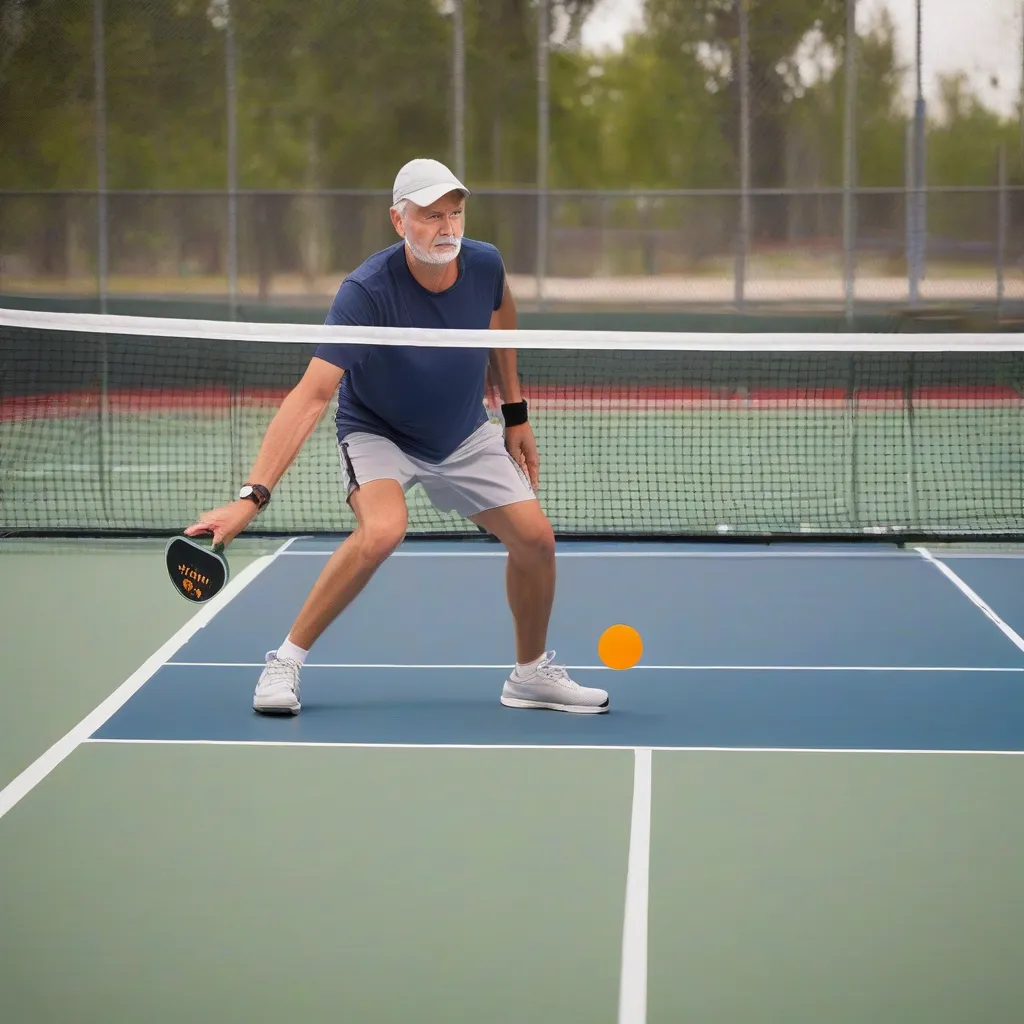Have you ever watched a singles pickleball match and wondered how the pros make it look so effortless? They glide across the court, seemingly always in the right position, delivering pinpoint shots that leave their opponents scrambling. It’s not magic, it’s strategy. While singles pickleball demands a different approach than doubles, mastering the right techniques can transform your game. This article will delve into effective strategies for playing singles pickleball, offering insights to help you dominate the court and achieve your pickleball dreams.
Understanding the Singles Court Dynamics
Singles pickleball utilizes the entire court, demanding more movement and strategic shot placement than doubles. Covering the court effectively is paramount. Unlike doubles, where you have a partner to cover half the court, in singles, you’re responsible for every inch. This means your positioning, footwork, and shot selection become even more critical.
Court Positioning: The Foundation of Singles Strategy
In singles, your default position should be around the center of the non-volley zone (NVZ) line. This allows you to react quickly to shots directed to either side of the court. Avoid standing too far back, as this gives your opponent more angles to exploit. Staying near the NVZ line also puts you in a prime position to attack short returns. “Think of the NVZ line as your command center,” advises a seasoned pickleball coach, “it’s the optimal location to control the flow of the game.”
Footwork Fundamentals for Singles Success
Agile footwork is crucial in singles. Quick, short steps are more effective than large strides, allowing you to change direction rapidly and maintain balance. Practice shuffling sideways to cover the court and moving forward and backward efficiently. “Footwork is the engine of your pickleball game,” says pro pickleball player Sarah Ansboury, “mastering it will elevate every aspect of your play.”
Serving and Returning: Setting the Tone
The serve and return are your first opportunities to dictate the point. In singles, a deep, consistent serve is key, aiming for the backhand corner to limit your opponent’s attacking options. On the return, focus on getting the ball deep and to the center of the court, neutralizing your opponent’s advantage.
Strategic Serving to Gain an Edge
Avoid aiming for aces every time. A well-placed, deep serve that forces your opponent to return a weak shot is often more effective. Varying your serve’s speed and spin can also keep your opponent off balance. “A consistent, strategically placed serve is more valuable than a powerful, erratic one,” says a top pickleball instructor.
Returning with Purpose: Setting up the Attack
Returning deep and to the center forces your opponent to move and reduces their angles for an aggressive return. A deep return also buys you time to recover to your optimal court position.
Mastering Shot Selection: Playing Smart
Singles pickleball is a chess match on the court. Choosing the right shot at the right moment can make all the difference. While power shots can be tempting, focusing on placement and consistency often yields better results.
The Third Shot Drop: A Singles Essential
The third shot drop is a cornerstone of singles strategy. Executing a soft, controlled drop shot after your serve forces your opponent to move forward, disrupting their rhythm and creating opportunities for you to attack their return. “Mastering the third shot drop is like having a secret weapon in your arsenal,” says former pickleball champion, Jennifer Lucore.
Dinking for Advantage
Dinking, the soft exchange of shots over the net, is another crucial element of singles strategy. Effective dinking can force errors and set up opportunities for a winning shot. “Dinking is a game of patience and precision,” as described in “The Art of Pickleball Dinking” by renowned pickleball coach, Mark Renneson, “it’s about strategically maneuvering your opponent into a vulnerable position.”
When to Attack: Capitalizing on Opportunities
While consistency is crucial, knowing when to attack is equally important. Look for short returns, weak dinks, or opportunities to volley for a put-away shot.
 Pickleball Singles Strategy
Pickleball Singles Strategy
Mental Game: Staying Focused and Adaptable
Singles pickleball can be mentally demanding. Staying focused, positive, and adaptable is key to success. Develop a routine to help you maintain concentration and manage your emotions during matches. “Your mental game is just as important as your physical game,” advises a sports psychologist specializing in pickleball.
Adapting to Your Opponent
Observe your opponent’s strengths and weaknesses. Adjust your strategy accordingly. If your opponent has a weak backhand, exploit it. If they struggle with dinking, engage them in longer dink rallies.
Staying Positive Under Pressure
Maintaining a positive attitude, even when facing setbacks, can make a significant difference in your performance. Celebrate your successes and learn from your mistakes.
Conclusion
Dominating singles pickleball requires a combination of strategic thinking, technical skill, and mental fortitude. Mastering court positioning, footwork, serving, returning, and shot selection are essential. Equally important is developing a strong mental game and adapting to your opponent’s style. By implementing the strategies discussed in this article and practicing consistently, you can elevate your singles game and experience the thrill of victory on the pickleball court. Now, share your thoughts! What are your go-to strategies for singles pickleball? Let us know in the comments below, and be sure to check out our related articles on advanced doubles strategies and effective training for pickleball tournaments to further enhance your game.
- Baker, Joe (Author)
- English (Publication Language)
- Bond, Payton (Author)
- English (Publication Language)
- Anderson, Brian (Author)
- English (Publication Language)
- Palcic, Lisa (Author)
- English (Publication Language)
- Foster, Blake (Author)
- English (Publication Language)
- Carnot, Prem (Author)
- English (Publication Language)
- Hall, Dennis (Author)
- English (Publication Language)
- Callahan, John (Author)
- English (Publication Language)
- Publishing, Fitness Research (Author)
- English (Publication Language)
- Arthur, S. M. (Author)
- English (Publication Language)









